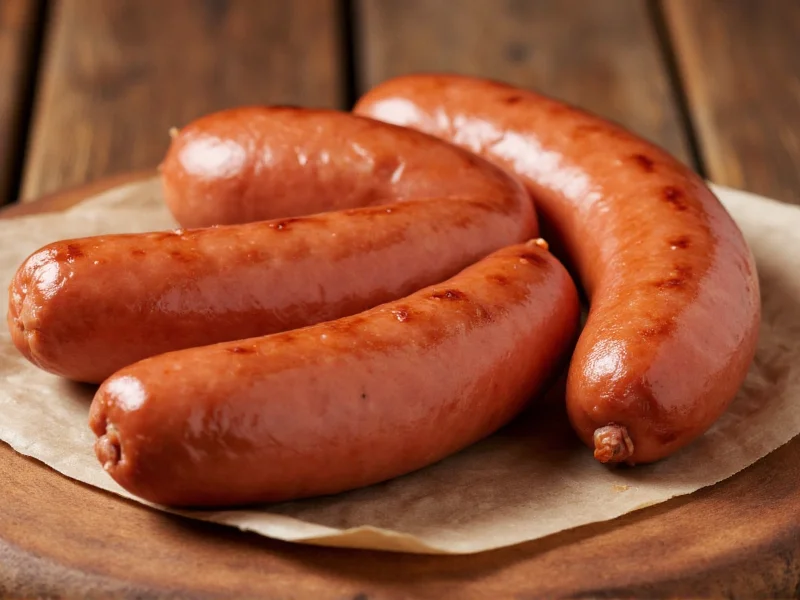When exploring what makes a sausage qualify as a “banger,” it’s essential to understand its historical roots and distinctive composition. These sausages emerged during World War I and II when meat shortages led butchers to incorporate higher percentages of breadcrumbs and water into sausage mixtures. This practical adaptation created the signature “banging” effect as steam built up during cooking – hence the name that stuck in British culinary tradition.
Historical Origins of Banger Sausages
The term “banger” gained popularity during World War II rationing periods when British sausages contained significantly less meat – sometimes as little as 10-15% – with the remainder consisting of breadcrumbs, water, and fillers. This high moisture content caused them to explode or “bang” when fried, creating both a culinary challenge and a distinctive characteristic. Post-war regulations established minimum meat content standards (currently 42% for pork sausages in the UK), preserving the banger’s identity while improving quality.
What Makes a Sausage a Banger: Key Characteristics
Authentic banger sausages differ from continental varieties in several crucial aspects. While German bratwurst or Italian sausages emphasize meat content and complex spice blends, traditional British bangers feature:
| Characteristic | Banger Sausage | Continental Sausage |
|---|---|---|
| Meat Content | Minimum 42% pork | Typically 70-80% meat |
| Filler Content | High breadcrumb ratio | Minimal or no breadcrumbs |
| Seasoning | Sage, pepper, mace | Garlic, paprika, wine |
| Casing | Natural pork casing | Variety including synthetic |
British vs Irish Banger Variations
While both nations claim banger heritage, subtle differences exist between British and Irish versions. Traditional English bangers often feature sage as the dominant herb, reflecting historical availability during winter months. Irish bangers typically include more black pepper and sometimes a hint of nutmeg, with regional variations like the Dublin-style banger incorporating potato flour as partial filler. Both maintain the essential characteristic of higher breadcrumb content compared to European counterparts, creating that distinctive texture when properly cooked.
Best Practices for Cooking Banger Sausages
Proper preparation prevents the infamous “bang” while preserving authentic texture. The best way to cook banger sausages involves:
- Starting in cold oil or butter, gradually increasing heat
- Maintaining medium-low temperature (160-175°C)
- Pricking once with a fork if swelling occurs
- Finishing under a grill for crisp exterior
- Avoiding high-heat searing that causes splitting
This gentle cooking method allows moisture to evaporate gradually while developing flavor. Many traditional British cooks recommend simmering bangers in ale or stock for 10 minutes before finishing, which enhances flavor while preventing explosive results – a technique perfected during wartime rationing.
Traditional Pairings and Serving Suggestions
The classic British combination of “bangers and mash” remains popular for good reason. Creamy mashed potatoes provide the perfect neutral base for the savory sausage, while onion gravy bridges the flavors. Regional variations include:
- Yorkshire pudding with roast onions (Northern England)
- Creamy neeps and tatties (Scotland)
- Colcannon (Irish mashed potatoes with cabbage)
- Picot pie (bangers baked with potatoes and onions)
For authentic presentation, serve bangers diagonally sliced to showcase the coarse texture and breadcrumb distribution – a visual hallmark of proper British sausage making.
Finding Authentic Banger Sausages
Where to buy authentic banger sausages depends on your location. In the UK, look for butchers displaying the British Quality Sausage Mark, indicating adherence to minimum meat content standards. Outside Britain, seek specialty British food importers or craft butchers using traditional recipes. When evaluating quality, check for:
- Visible breadcrumb texture in cut sections
- Simple ingredient list (pork, breadcrumbs, salt, pepper, sage)
- Natural casings rather than synthetic
- British or Irish origin labeling
Many supermarket “british-style” sausages contain higher meat percentages and fewer breadcrumbs, sacrificing authenticity for modern preferences. True bangers should have that distinctive coarse, slightly crumbly texture when cooked.
Common Misconceptions About Banger Sausages
Several myths persist about these traditional sausages. Contrary to popular belief, not all British sausages are “bangers” – the term specifically refers to those with higher moisture content that may pop during cooking. Additionally, while wartime versions contained minimal meat, modern regulations ensure minimum pork content. Another misconception suggests bangers must split to be authentic; in reality, proper cooking technique prevents excessive bursting while maintaining traditional characteristics.











 浙公网安备
33010002000092号
浙公网安备
33010002000092号 浙B2-20120091-4
浙B2-20120091-4